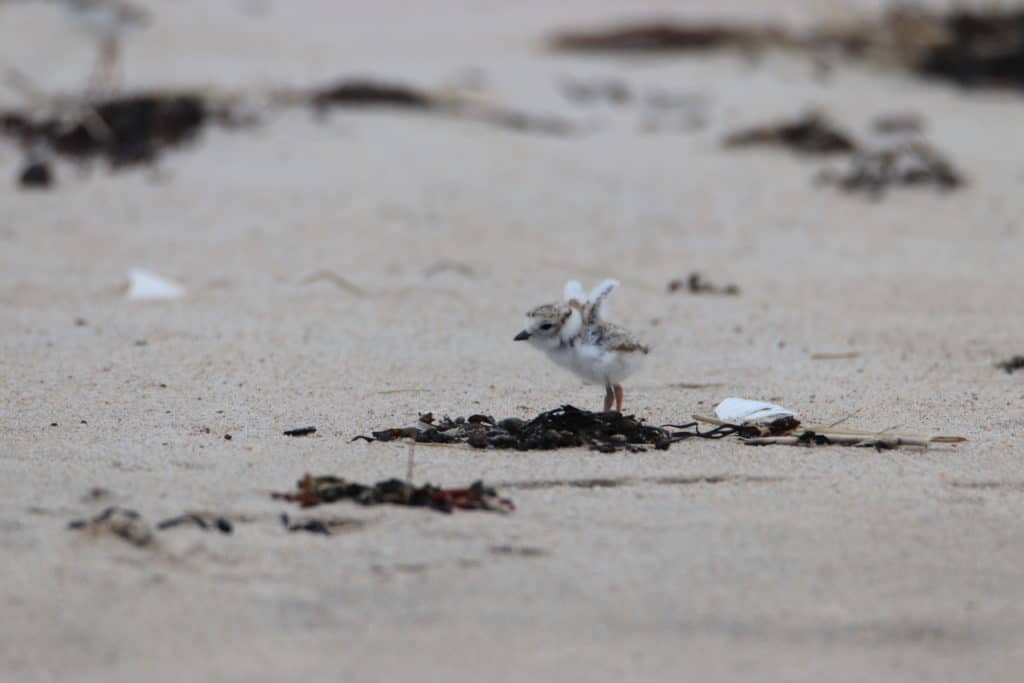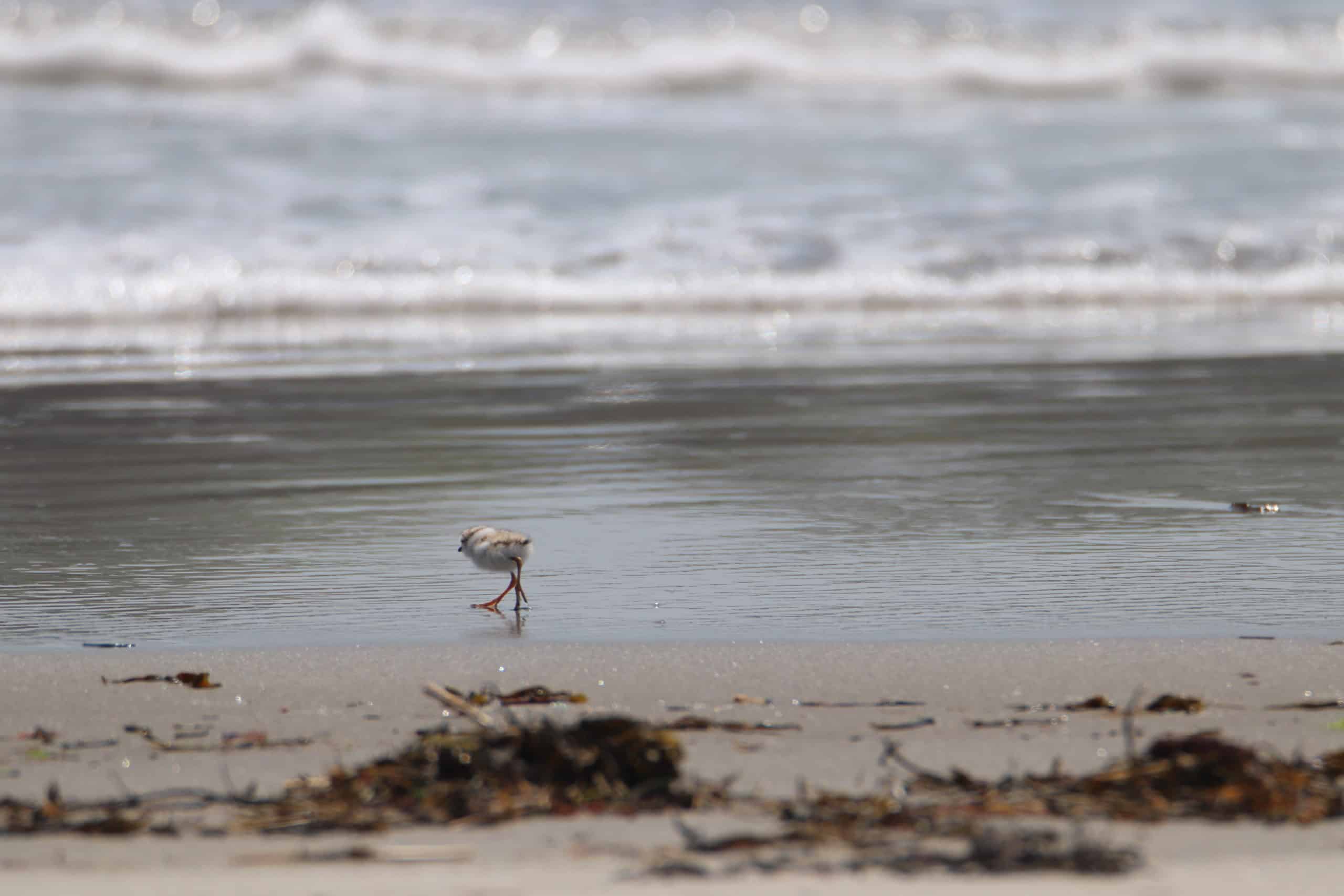
At first glance, there is nothing cuter than a cotton ball-sized piping plover chick scurrying about the water’s edge or tumbling through tufts of dune grass. Now imagine staring at the Maine Coastal Birds Crew calendar of 65 anticipated hatch dates for piping plover nests ranging from Georgetown to Ogunquit. We promise those initial feelings of awe transform into something a bit more overwhelming when you consider everything these endangered birds are up against.

High tides, heat waves, extreme storms, and predators are just a few of the obstacles that piping plover chicks juggle in their natural beach habitat. Take into account the start of their breeding season in mid to late April, and normal environmental pressures become heightened by millions of people (and their pets) flocking to the coast of Maine during the summer months. So how do these chicks beat the odds in a constantly changing ecosystem that happens to be New England’s greatest tourist attraction?
Juvenile piping plovers are precocial, meaning that chicks venture out of the nest within hours of hatching to forage. Brooding parent birds keep a watchful eye to alert their chicks at the first sign of any disturbance, attempting to ward off potential predators with a broken wing display. The chicks’ best defense is their light brown down with a white underbelly which is camouflaged perfectly by the sand. This is why their first instinct is to freeze at the sign of danger, making them nearly invisible to anyone walking down the beach.

If you do happen to encounter plover chicks on the beach, it’s always best to observe these broods from afar. Alarm calls from the parent birds or broken wing displays send a message that you need to give them more space. Within about 25 days after hatching, the chicks will fledge and are less vulnerable to disturbances on the ground. Until then, they can certainly use your help this summer!
Photography by Sarah Geisler.
